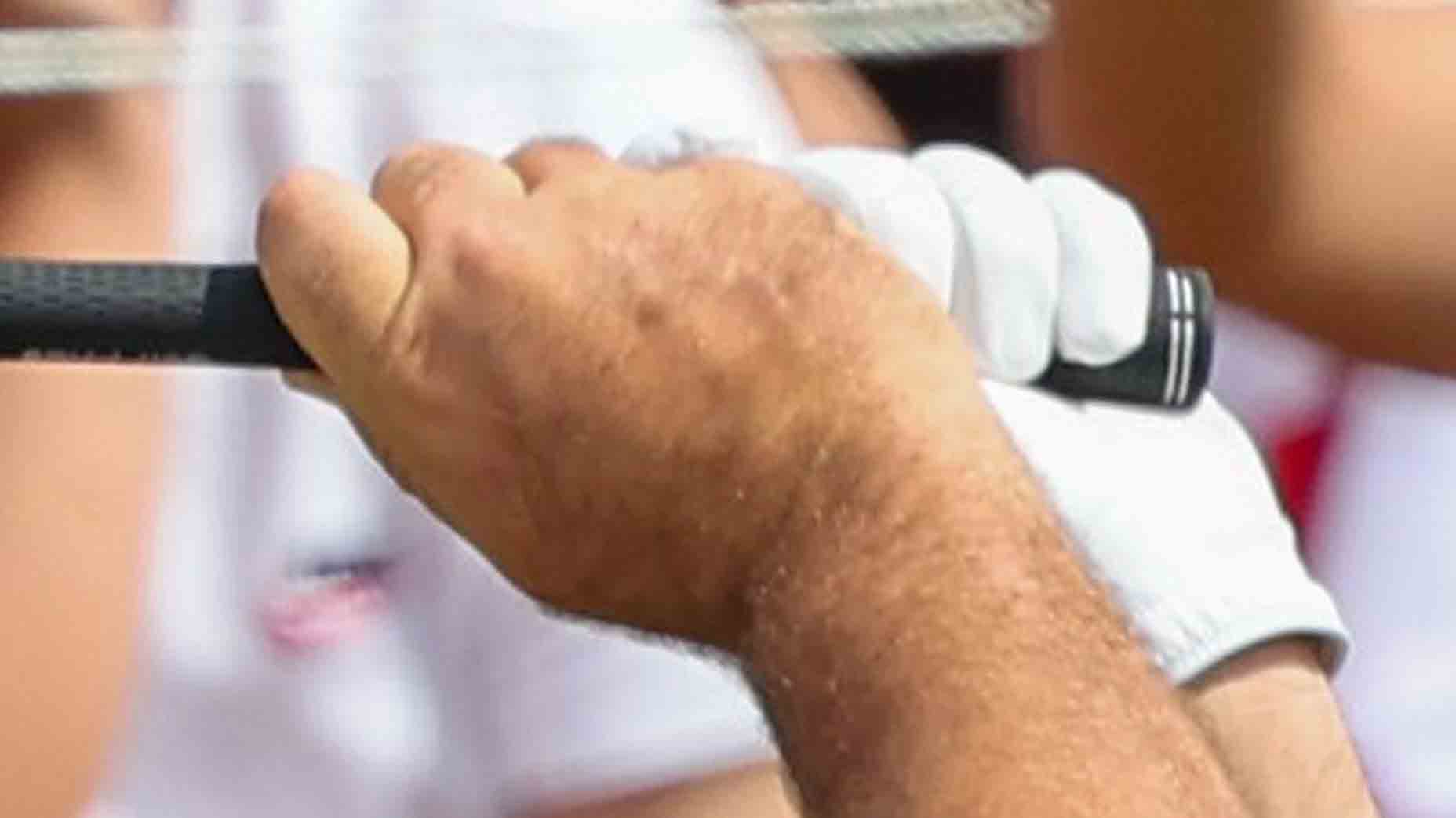Teaching pro: ‘99 percent’ of players who ask for help are gripping club wrong
- Share on Facebook
- Share on Twitter
- Share by Email

Getty Images
Michael Alexander says he sees the same mistake being made by folks who send the teaching professional a look at their swings.
He sees it alarmingly often, in fact.
“Ninety-nine percent” of inquirers do it, he says.
He was talking on a video recently posted to his Instagram account, which you can watch in full here. And the frequently committed error features the grip.
You should be holding the club in your fingers — and not your palms.
Notably, the thought is geared toward higher handicaps — but the author himself can vouch for seeing it, which we’ll get to in a sec. Let’s start, though, with some questions.
What happens when the club is held more in the palm?
“What that’s going to do is just give you way too much mobility,” Alexander said, “and it’s going to be very hard to use your wrists correctly in the swing so you’re not going to be able to strike it consistently or get a consistent direction.”
What about if the club is gripped in the fingers?
“That’s going to allow us to control the clubface and use our wrist properly in the swing,” Alexander said in the video, “to get strike and also to get consistency of direction.”
So what does that properly look like?
It depends. The grip will obviously rest in the fingers, but the amount of wrist turn can vary.
In Alexander’s video, he offered this for the left hand for his right-handed swing:
“What we want to do is we want to hold it … diagonally along the fingers, wrap [the wrist] over, so we can see all of your knuckles, you can see the logo [of your golf glove] — it’s pointing up to your face — and the V shape [created by your pointer finger and thumb] is pointing over toward your right shoulder for the right-handed golfer.”
And this was his thought for the right hand:
“What we want to see is again fingers. So I like to run the fingers, middle of the fingers along the bottom of the grip and wrap over. So now I’ve got opposite forces, I’m covering the grip — you can’t see any of the front of the grip. This is a weaker position on this hand and it’s much harder to manipulate that club face and it’s so much easier to get the wrist set I need on the way back and to release it on the way through.”
There’s another question.
When did I see the palm grip previously?
A couple weeks ago, from my friend Josh. You can read the story I wrote about his plight here, but in short, he’d been struggling with his game — and his instructor, Kelan McDonagh, told him most of his problems were stemming from a palm grip. McDonagh, the director of instruction at Metedeconk National Golf Club in New Jersey, also noted that the degree of wrist turn on the grip can vary, as bodies and swings can vary.
His advice, also written here, is below:
In Josh’s case, his left hand had been set to where he saw maybe one knuckle; the adjustment moved them clockwise. Through a drill, he was shown how effective the left hand had — or hadn’t — been.
In his Metedeconk training center, Kelan used a device constructed by his mentor, Mike Adams (a GOLF Top 100 Teacher hall of famer), but a two-by-four also works. Kelan duplicated Josh’s grip, placed the clubface at the butt end of the two-by-four, then rotated through, showing an open clubface. That lead hand, Kelan said, has a relationship to the lower body. “Your lower body opens the clubface, so we better make sure that the lead hand is in a position to keep it square.”
Videos demonstrating this are below.
As for the right hand, Josh’s had been set to where his right thumb was nearly aligned with the club’s shaft; the adjustment moved the thumb and knuckles slightly counter-clockwise.
Through another drill, he was shown how effective his right hand had — or hadn’t — been. Holding an iron with just his right hand, Josh took quarter swings, then stopped on the follow-through, which showed an open face — and obvious trouble. “So if you’re wide open with the grip and your body wants to do this as well [come over the top, as Josh was],” Kelan said, “now you’ve got a lot of things moving left.”
Videos demonstrating this are below.
Latest In Instruction

Nick Piastowski
Golf.com Editor
Nick Piastowski is a Senior Editor at Golf.com and Golf Magazine. In his role, he is responsible for editing, writing and developing stories across the golf space. And when he’s not writing about ways to hit the golf ball farther and straighter, the Milwaukee native is probably playing the game, hitting the ball left, right and short, and drinking a cold beer to wash away his score. You can reach out to him about any of these topics — his stories, his game or his beers — at nick.piastowski@golf.com.
